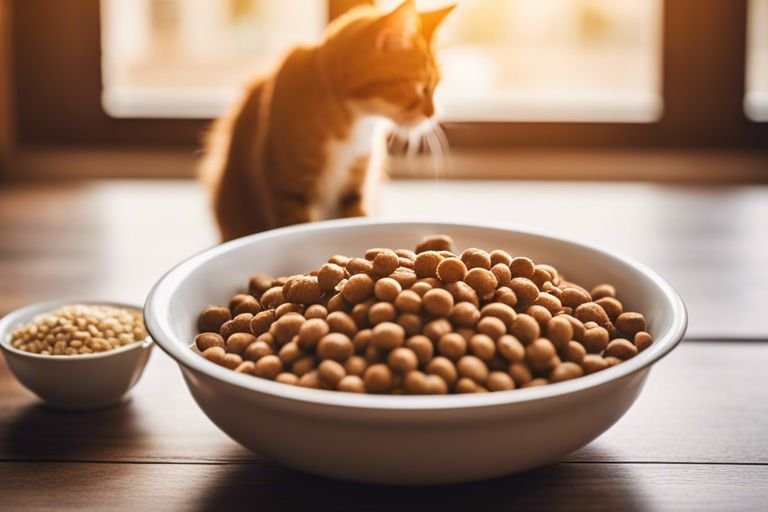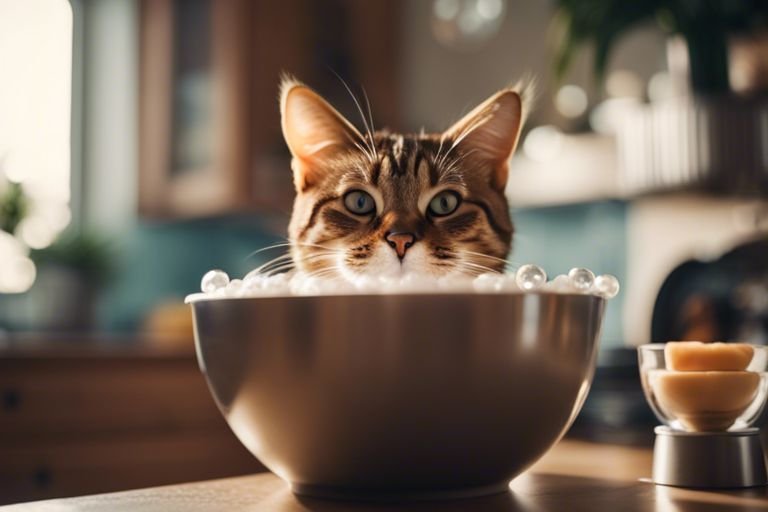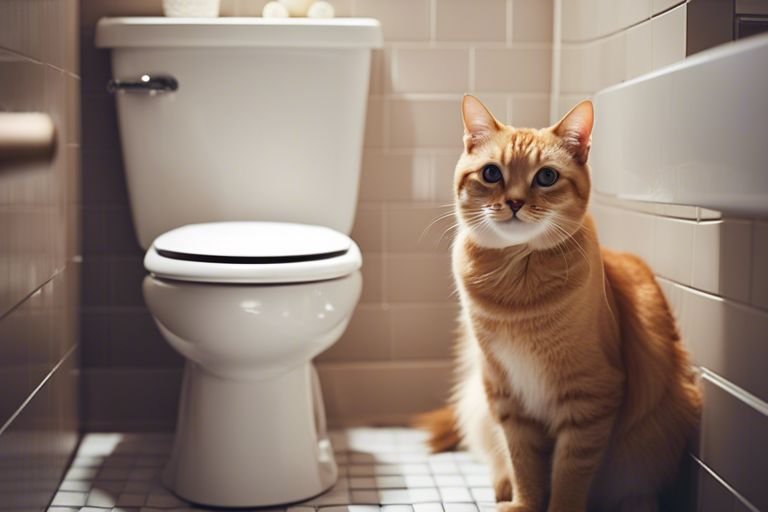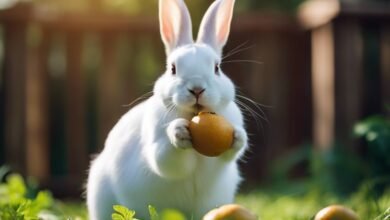
There’s a growing awareness of the importance of low-glycemic foods for maintaining optimal health, and this applies to our feline friends too. Just as we pay attention to our own diets, it’s crucial to consider the impact of high-glycemic ingredients on our cats’ well-being. Discover the advantages of feeding your cat low-glycemic food and how it can contribute to their overall health and vitality.
Key Takeaways:
- Low-Glycemic Cat Food Can Help Manage Diabetes: By stabilizing blood sugar levels, low-glycemic cat food can be beneficial for cats with diabetes.
- Weight Management: Low-glycemic cat food may assist in weight management by promoting a more balanced energy level throughout the day.
- Improved Digestive Health: Cats on a low-glycemic diet may experience better digestive health due to the nature of the food’s ingredients.
- Preventative Health Benefits: Feeding low-glycemic cat food could potentially help prevent future health issues such as obesity and diabetes.
- Quality Ingredients Matter: Opt for low-glycemic cat food made with high-quality, whole food ingredients to ensure your cat receives the best nutrition.

What is Low-Glycemic Cat Food?
Definition and Explanation
For cat owners looking to provide their furry friends with a nutritionally sound diet, low-glycemic cat food is a great option. This type of cat food is formulated to have a lower impact on your cat’s blood sugar levels compared to regular cat food.
Low-glycemic cat food typically contains complex carbohydrates that are digested more slowly, leading to a gradual release of glucose into the bloodstream. This can help prevent sudden spikes and crashes in blood sugar levels, which is beneficial for cats, especially those with diabetes or weight management issues.
How it Differs from Regular Cat Food
Differs for cat owners used to feeding their feline friends regular cat food, the concept of low-glycemic cat food may be new. Regular cat food tends to contain higher levels of simple carbohydrates that are quickly broken down into sugar, causing a rapid increase in blood glucose levels. On the other hand, low-glycemic cat food focuses on using complex carbohydrates that are more slowly digested, providing a steady release of energy over time.
To ensure your cat stays healthy and maintains stable energy levels throughout the day, switching to a low-glycemic cat food option could be a beneficial choice. By opting for food with a lower glycemic index, you are taking a proactive step towards supporting your cat’s overall health and well-being.

The Science Behind Low-Glycemic Cat Food
There’s a growing interest in low-glycemic cat food and its potential benefits for our feline companions. Understanding the science behind this type of cat food can help us make informed decisions about our pets’ diet. By delving into the concept of glycemic index and its impact on cats, we can gain valuable insights into how different foods affect their blood sugar levels.
Glycemic Index and Its Impact on Cats
Impact on cats’ blood sugar levels is vital because it influences their overall health and wellbeing. The glycemic index measures how quickly a carbohydrate-containing food raises blood glucose levels. Foods with a high glycemic index can cause rapid spikes in blood sugar, leading to potential health issues like obesity and diabetes in cats.
Blood Sugar Regulation and Insulin Sensitivity
Indexing blood sugar regulation and insulin sensitivity is crucial for understanding how low-glycemic cat food can benefit our feline friends. Controlling blood sugar levels through a diet that includes low-glycemic foods can help prevent fluctuations that may contribute to insulin resistance and obesity in cats.
Science suggests that a diet rich in low-glycemic foods can promote stable blood sugar levels and improve insulin sensitivity in cats. This can be especially beneficial for cats with diabetes or those at risk of developing the condition. Choosing low-glycemic cat food may help manage their blood sugar levels more effectively and support their overall health and quality of life.
Health Benefits of Low-Glycemic Cat Food
Weight Management and Obesity Prevention
Low-glycemic cat food can be a valuable tool in weight management and the prevention of obesity in cats. Foods with a low glycemic index can help regulate blood sugar levels in felines, preventing spikes and crashes that may lead to overeating. By providing a steady release of energy, low-glycemic cat food can help cats feel full and satisfied for longer periods, reducing the likelihood of excessive caloric intake and subsequent weight gain.
Improved Blood Sugar Control and Reduced Risk of Diabetes
With low-glycemic cat food, the carbohydrate sources are slow to digest and absorb, resulting in a gradual rise in blood sugar levels. This slow and steady release of glucose can help improve blood sugar control in cats, reducing the risk of insulin resistance and diabetes development. By minimizing fluctuations in blood sugar levels, low-glycemic cat food can support overall metabolic health in felines.
Control over blood sugar levels is crucial in preventing the onset of diabetes in cats. By maintaining stable glucose levels with low-glycemic cat food, pet owners can help mitigate the risk of their feline companions developing this serious and potentially life-threatening condition. Consistent consumption of low-glycemic cat food can contribute to long-term health and well-being by supporting optimal blood sugar management in cats.
Enhanced Digestive Health and Reduced Inflammation
Improved digestive health and reduced inflammation are additional benefits of incorporating low-glycemic cat food into a feline’s diet. Foods with a low glycemic index typically contain high-quality ingredients that are easier for cats to digest, promoting gastrointestinal health and nutrient absorption. Additionally, by reducing inflammation in the body, low-glycemic cat food can support overall immune function and contribute to a healthier, happier cat.
Sugar spikes and crashes can lead to inflammation in the body, potentially exacerbating existing health issues in cats. By opting for low-glycemic cat food, pet owners can provide their feline companions with a diet that promotes digestive wellness and helps minimize inflammation, improving their overall quality of life.

Common Misconceptions About Low-Glycemic Cat Food
Debunking the Myth: "Low-Glycemic Means Low-Nutrient"
Now, let’s address a common myth surrounding low-glycemic cat food – the misconception that it lacks necessary nutrients. While it’s true that low-glycemic formulas aim to minimize the unnecessary fillers and additives that can spike blood sugar levels in cats, this doesn’t mean they are deficient in vital nutrients. In fact, many high-quality low-glycemic cat foods are specifically formulated to provide a balanced and complete diet that meets all of your feline friend’s nutritional needs.
Addressing Concerns About Palatability and Texture
An important concern that cat owners may have when considering low-glycemic cat food is how palatable and appealing it will be to their furry companions. Rest assured, manufacturers of low-glycemic cat food are aware of the importance of taste and texture for cats. They have developed recipes that not only prioritize low-glycemic ingredients but also ensure a delicious flavor and desirable texture that will entice even the pickiest eaters.
Common misconceptions about low-glycemic cat food can deter pet owners from exploring healthier dietary options for their feline friends. By debunking myths and addressing concerns about nutrient content, palatability, and texture, cat owners can make informed decisions that promote their cat’s overall well-being and health.
Choosing the Right Low-Glycemic Cat Food
Key Ingredients to Look For
To ensure you are selecting a high-quality low-glycemic cat food, it is vital to pay attention to the ingredients listed on the packaging. Look for foods that have quality protein sources such as real meat, poultry, or fish listed as the first ingredient. These protein sources are crucial for your cat’s overall health and well-being.
Additionally, keep an eye out for ingredients like whole grains, vegetables, and fruits. These provide vital nutrients and fiber to support your cat’s digestion and overall health. Avoid foods that list meat by-products or fillers like corn, wheat, and soy, as these can lead to spikes in blood sugar levels.
Avoiding Fillers and By-Products
The quality of ingredients in your cat’s food plays a significant role in their overall health. By choosing low-glycemic cat food that avoids fillers and by-products, you are providing your furry friend with a nutritionally balanced diet that supports their well-being. Fillers like corn, wheat, and soy offer minimal nutritional value and can contribute to weight gain and digestive issues.
Avoiding foods that contain meat by-products is also crucial, as these are often low-quality ingredients that may not provide the necessary nutrients your cat needs. Opt for foods that prioritize real meat, poultry, or fish as the primary protein sources for a diet that mirrors what cats would naturally consume in the wild.
Reading Labels and Making Informed Decisions
When selecting a low-glycemic cat food, it is vital to read the labels carefully and make informed decisions about what you are feeding your feline friend. Take the time to research different brands and familiarize yourself with common ingredients to look for and avoid. Understanding the nutritional content of your cat’s food can have a significant impact on their overall health and well-being.
Avoiding foods with artificial colors, flavors, and preservatives is also recommended, as these additives can have negative effects on your cat’s health. Opt for natural and minimally processed foods to ensure your cat is getting the best nutrition possible.
LowGlycemic cat food can be a beneficial choice for your feline companion, supporting stable blood sugar levels and overall health. By choosing high-quality ingredients, avoiding fillers and by-products, and reading labels carefully, you can make informed decisions that promote your cat’s well-being and happiness.

Transitioning Your Cat to Low-Glycemic Cat Food
After reading about the Top 3 Benefits of Grain-Free Cat Food, you may be considering transitioning your cat to a low-glycemic diet. It’s important to make this transition gradually to minimize any discomfort or digestive upset for your feline friend.
Gradual Introduction to Minimize Discomfort
Transitioning your cat to a low-glycemic cat food should be done slowly over a period of 7-10 days. Start by mixing a small amount of the new food with your cat’s current food, gradually increasing the ratio of new to old food each day. This gradual introduction allows your cat’s digestive system time to adjust to the new diet, reducing the likelihood of stomach upset.
Monitoring Progress and Adjusting as Needed
Your cat’s transition to low-glycemic cat food should be closely monitored. Watch for any signs of digestive issues, such as vomiting or diarrhea, and adjust the transition timeline as needed. If your cat is having trouble adjusting, you may need to slow down the transition process or consult your veterinarian for advice. It’s important to be patient and attentive to your cat’s needs during this transition period.
Conclusion
As a reminder, choosing low-glycemic cat food can have numerous benefits for your feline companion. From maintaining a healthy weight and reducing the risk of diabetes to providing sustained energy levels and overall better health, the decision to switch to low-glycemic cat food can greatly impact your cat’s quality of life. By understanding the importance of a balanced diet and making informed choices, you can ensure that your cat stays happy and healthy for years to come.
FAQ
Q: What is low-glycemic cat food?
A: Low-glycemic cat food is specifically formulated to provide a balanced diet for cats while minimizing spikes in their blood sugar levels. This can be beneficial for cats with diabetes or those at risk for developing the condition.
Q: How can low-glycemic cat food benefit my cat's health?
A: Low-glycemic cat food can help regulate your cat’s blood sugar levels, which is important for overall health and can be especially beneficial for diabetic cats. It can also promote weight management and reduce the risk of obesity-related health issues.
Q: What ingredients should I look for in low-glycemic cat food?
A: Look for high-quality protein sources such as chicken, fish, or turkey, along with complex carbohydrates like sweet potatoes or peas. Avoid cat foods with high levels of fillers like corn or wheat, as these can cause spikes in blood sugar levels.
Q: Are there any potential drawbacks to feeding my cat low-glycemic cat food?
A: While low-glycemic cat food can have many benefits, it’s important to consult with your veterinarian before making any dietary changes for your cat. Some cats may have specific dietary needs or health conditions that require a different approach.
Q: How can I transition my cat to a low-glycemic diet?
A: To transition your cat to a low-glycemic diet, start by mixing small amounts of the new food with their current food and gradually increasing the ratio over a week or two. Monitor your cat’s weight, energy levels, and overall well-being during the transition period.




